The compressor is used to pump refrigerant into the A/C system to convert low-pressure vapor refrigerant into high-pressure vapor refrigerant. All modern compressors use clutches and drive pulleys. Whenever the engine is running, the pulley is detached from the belt. When the A/C button is pressed, the clutch engages, locking the compressor on the pulley and turning it.
Compressor failure will cause the A/C system to fail to work normally. The impounded compressor may also contaminate metal fragments in other parts of the A/C system.
Part 1 of 2: Locate the compressor
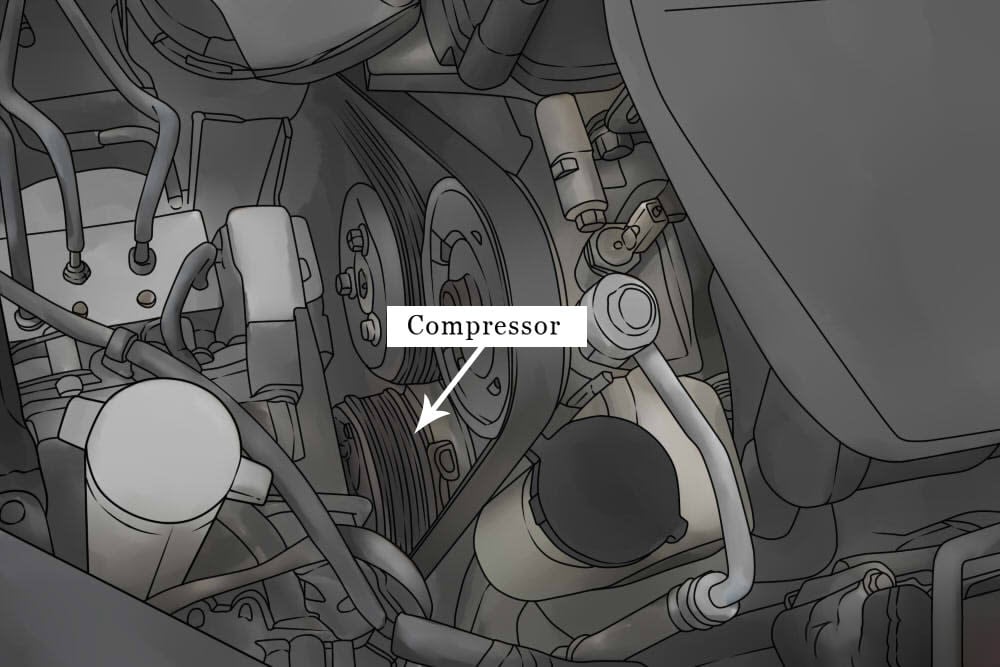
Step 1: Locate the A/C compressor. The A/C compressor will be located at the front of the engine with the rest of the belt-driven accessories.

Step 2: Have the refrigerant recovered by a professional. Before the A/C system can be serviced, the refrigerant must be removed from the system.
This can only be done by a professional using an evacuation machine.
Part 2 of 2: Remove the compressor
Jack and jack stands
Protective gloves
Repair manuals
Safety glasses
Wrench
Note: Be sure to wear protective gloves and safety glasses before working.

Step 1: Locate the serpentine belt tensioner. If you have a difficult time finding the tensioner, consult the belt routing diagram.
This can typically be found on a decal placed somewhere in the engine compartment, or in the vehicle repair manual.

Step 2: Rotate the tensioner. Use a socket or wrench to slide the automatic tensioner away from the belt.
Whether this is clockwise or counterclockwise depends on the vehicle and belt routing.
Note: Some tensioners will have a square hole to insert a ratchet end into, rather than a bolt head for a socket or wrench.

Step 3: Remove the belt from the pulleys. While holding the tensioner away from the belt, slide the belt off the pulleys.

Step 4: Disconnect the electrical connectors from the compressor. These should pull out easily.

Step 5: Disconnect the pressure hoses from the compressor. Using a ratchet or wrench, disconnect the pressure hoses from the compressor.
Plug them to prevent system contamination.

Step 6: Remove the compressor mounting bolts. Using a ratchet or wrench, remove the compressor mounting bolts.

Step 7: Remove the compressor from the vehicle. It should come out with a little tugging, but be careful because it is often heavy.
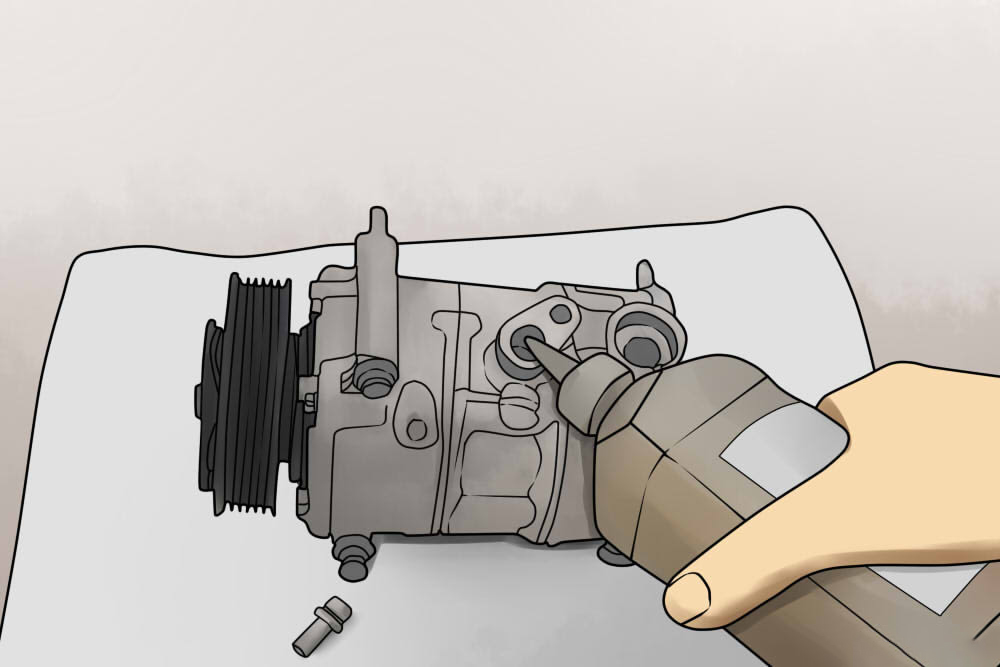
Step 8: Prepare the new compressor. Compare the new compressor to the old one to ensure they are the same.
Then remove the dust caps from the new compressor and add a small amount of recommended lubricant to the new compressor (usually around ½ ounce). Most compressors use PAG oil, but a few use Polyol Glycol, so it’s important to determine which is used in your vehicle.
Also, some compressors come with the oil already installed; read the instructions supplied with your compressor.
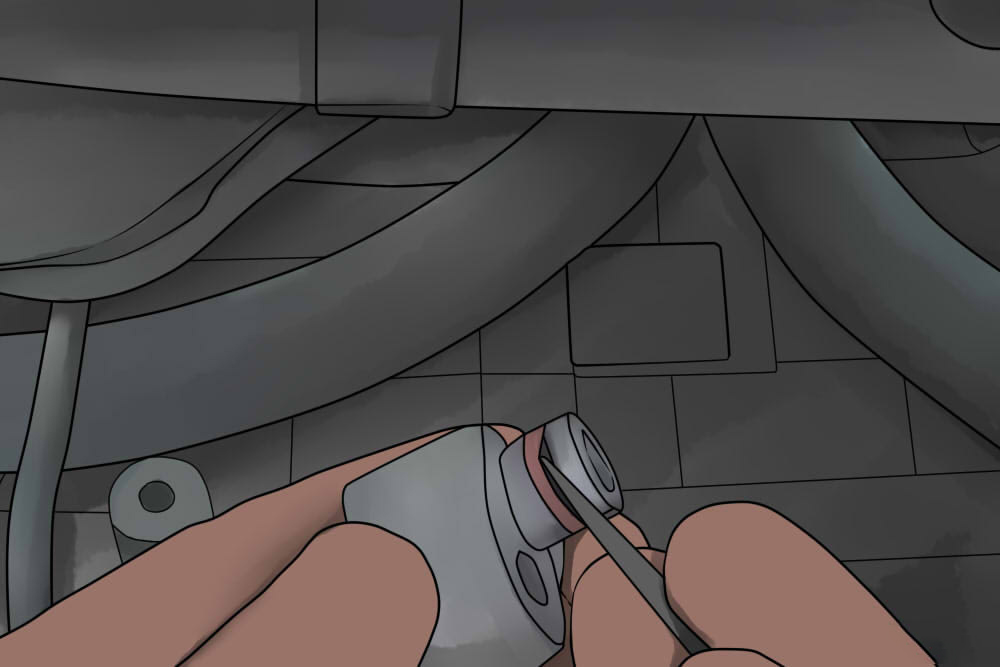
Step 9: Replace the pressure line o-rings. Use a small screwdriver or pick to remove the o-rings from the A/C pressure lines.
Some compressors will come with replacement o-rings, or your can get replacements from your local auto parts store. Slide the new o-rings into place.
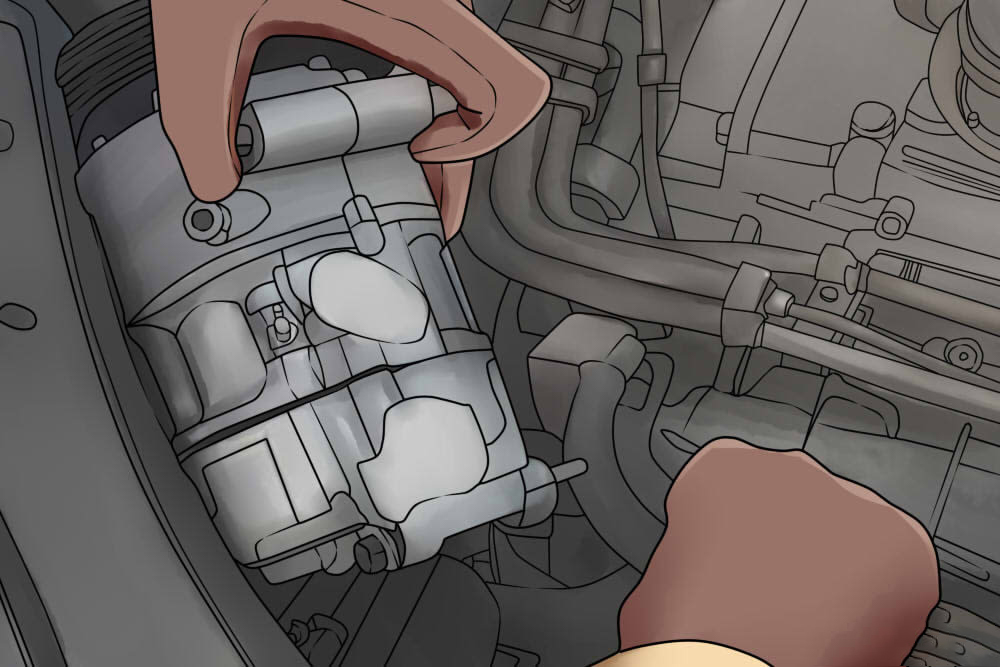
Step 10: Lower the new A/C compressor into the vehicle. Lower the new compressor into the vehicle and align it with the mounting holes.
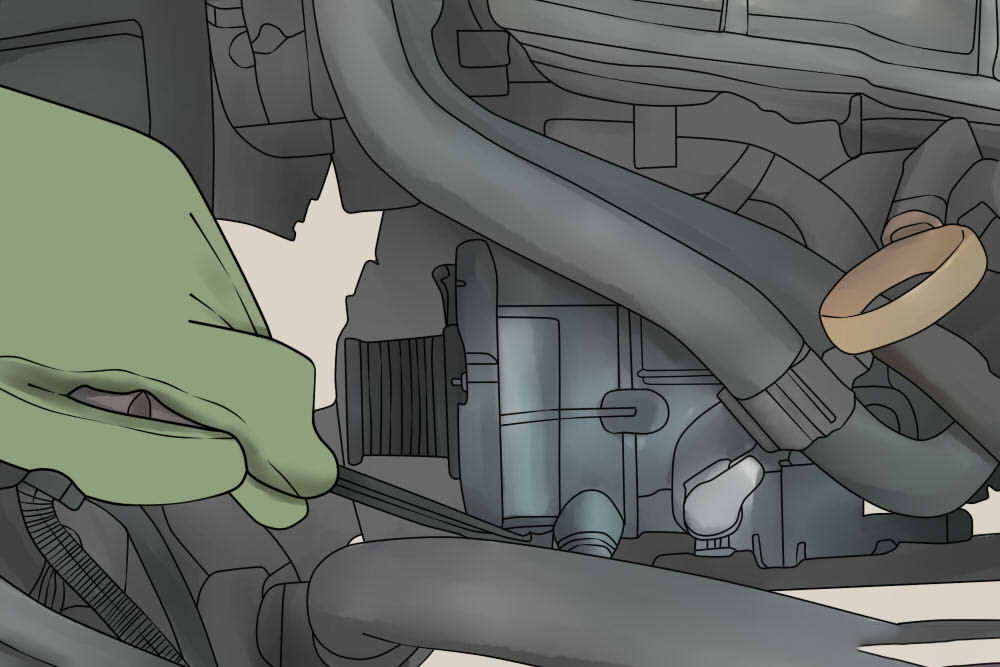
Step 11: Reinstall the mounting bolts. Reinstall the mounting bolts and tighten them down.
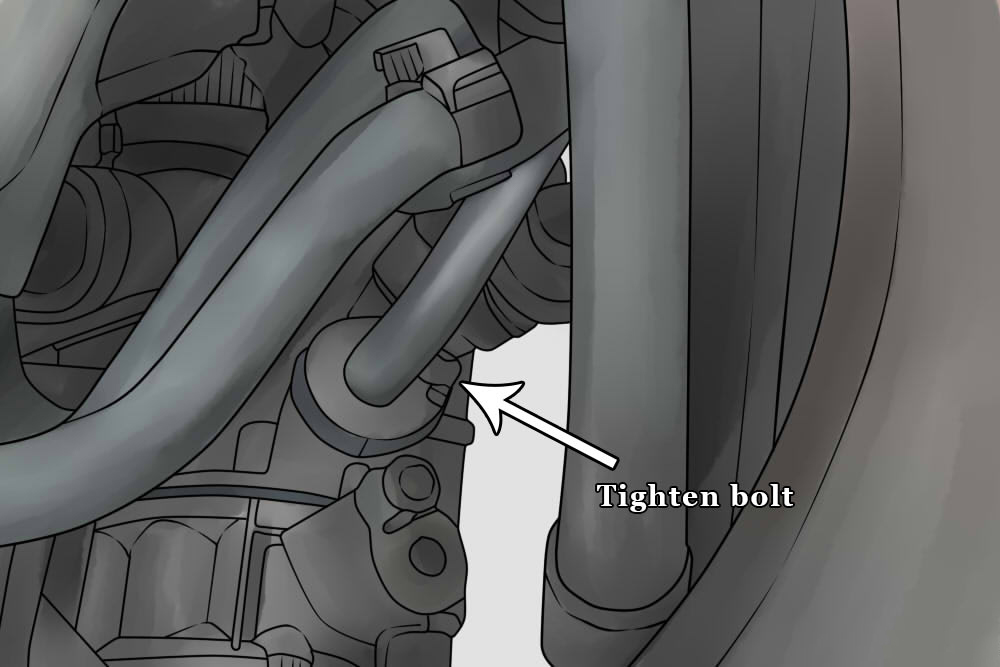
Step 12: Reinstall the lines. Reinstall the lines and tighten down the bolts the line bolts.
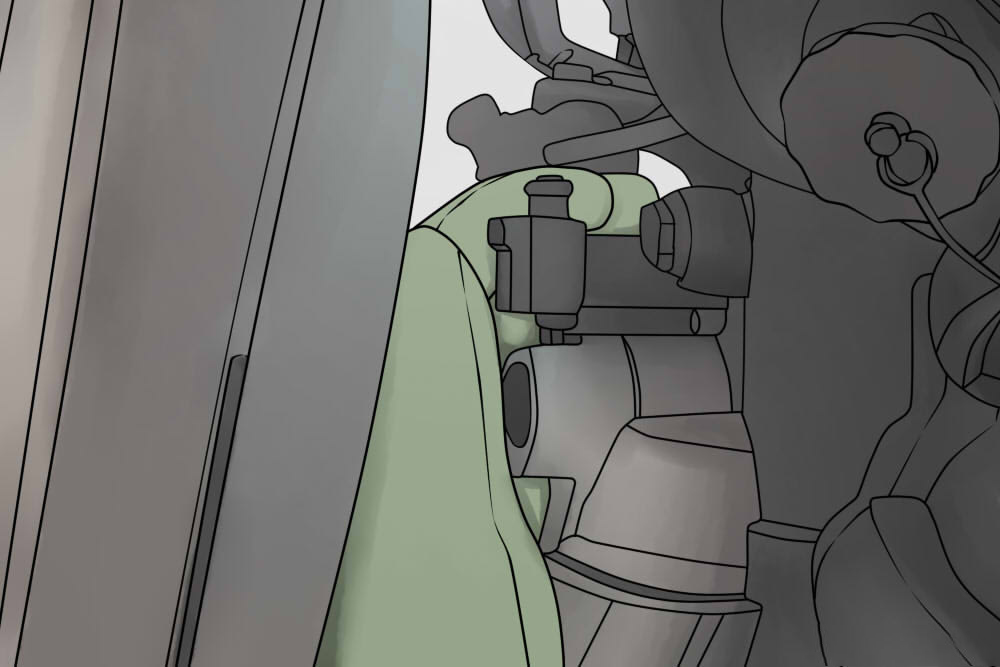
Step 13: Reinstall the electrical connectors. Reinstall the electrical connectors as they originally were.
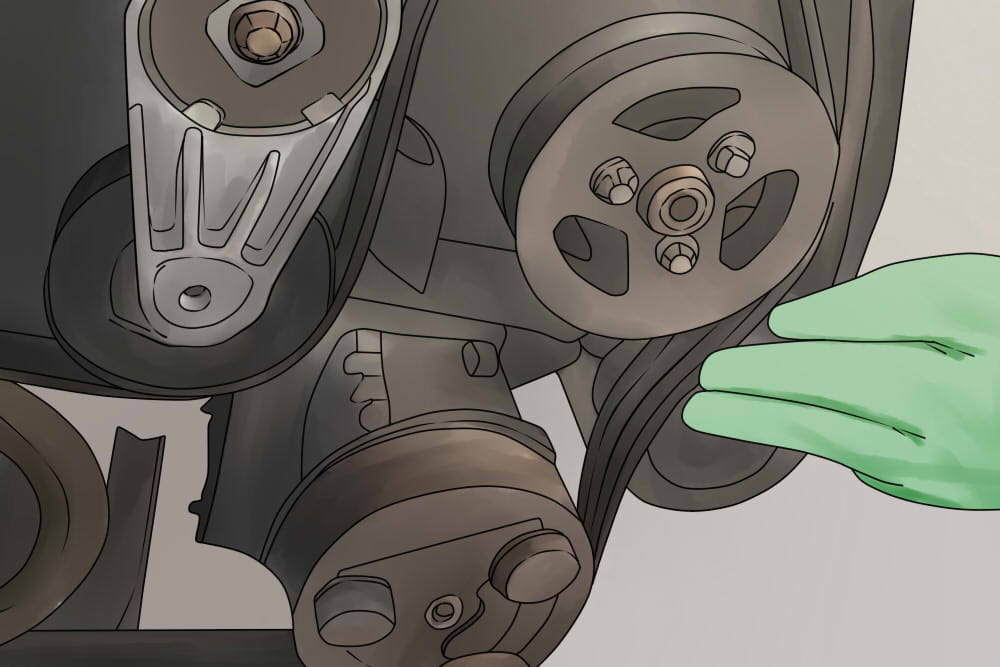
Step 14: Position the belt on the pulleys. Position the belt on the pulleys, following the belt routing diagram to ensure the belt is routed correctly.

Step 15: Install the new belt. Push or pull the tensioner to a position that allows the belt to be installed onto the pulleys.
Step 16: Have a professional recharge the system. Have the system recharged by a professional.
You should now have ice cold A/C - no more sweating through your clothes on a hot summer's day. Compressor replacement is not an easy task, though, so if you prefer to have a professional tackle this job for you, the team at Your Mechanic offers top-notch compressor replacement.













